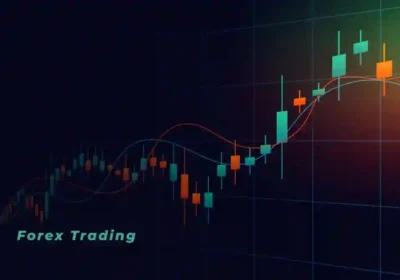Enhancing Predictive Accuracy with Ensemble Methods in Forex Robot Strategies
In the dynamic realm of foreign exchange (Forex) trading, where milliseconds can make or break fortunes, the quest for accurate predictive models is relentless. Forex traders, both institutional and retail, constantly seek strategies that can forecast price movements with high precision. In this pursuit, ensemble methods have emerged as a powerful tool, offering enhanced predictive accuracy and robustness in Forex robot strategies.
The Challenge of Predictive Accuracy in Forex Trading
Forex markets are notoriously volatile and complex, driven by a multitude of factors including geopolitical events, economic indicators, and sentiment shifts. Traditional models often struggle to capture the nuances of this complexity, leading to inaccurate predictions and suboptimal trading decisions. Moreover, the high-frequency nature of Forex trading amplifies the significance of predictive accuracy, as even small deviations can result in substantial losses.
Enter Ensemble Methods
Ensemble methods represent a paradigm shift in predictive modeling, harnessing the collective intelligence of multiple models to produce superior predictions. Unlike traditional single-model approaches, ensemble methods combine the forecasts of diverse models, mitigating individual model biases and errors. By leveraging the wisdom of crowds, ensemble methods can uncover hidden patterns in Forex data and generate more reliable predictions.
Understanding Ensemble Methods
Ensemble methods encompass a diverse array of techniques, each offering unique advantages in Forex trading strategies. Some of the most prominent ensemble methods include:
- Bagging (Bootstrap Aggregating): Bagging involves training multiple instances of a base model on different subsets of the training data, typically using bootstrapping. The final prediction is obtained by aggregating the predictions of individual models, often reducing variance and improving robustness.
- Boosting: Boosting algorithms iteratively train weak learners, focusing on instances that were misclassified in previous iterations. By sequentially refining the model’s focus on difficult instances, boosting can significantly enhance predictive accuracy.
- Random Forest: A variant of bagging, random forest constructs an ensemble of decision trees trained on random subsets of features. By introducing randomness in both sample selection and feature selection, random forest mitigates overfitting and improves generalization performance.
- Gradient Boosting Machines (GBM): GBM builds an ensemble of weak learners, typically decision trees, in a sequential manner. Each new learner is trained to correct the errors of the previous ones, gradually improving the overall prediction accuracy.
- Stacking: Stacking combines the predictions of multiple base models using a meta-learner, which learns to weigh the predictions of individual models optimally. By learning from the strengths and weaknesses of diverse models, stacking can yield superior predictive performance.
Advantages of Ensemble Methods in Forex Trading
The application of ensemble methods in Forex robot strategies offers several compelling advantages:
- Improved Predictive Accuracy: Ensemble methods excel at capturing complex patterns in Forex data, leading to more accurate predictions of future price movements. By leveraging diverse models, ensemble methods can effectively mitigate individual model biases and errors, resulting in superior performance.
- Enhanced Robustness: Forex markets are inherently volatile, subject to sudden shifts and unpredictable events. Ensemble methods, by aggregating the forecasts of multiple models, exhibit greater resilience to market fluctuations and noise. This enhanced robustness ensures more consistent performance across diverse market conditions.
- Mitigation of Overfitting: Overfitting, a common pitfall in predictive modeling, occurs when a model learns to memorize the training data rather than generalize from it. Ensemble methods, particularly those based on bagging and randomization techniques, mitigate overfitting by introducing diversity in the underlying models, thereby improving generalization performance.
- Adaptability to Dynamic Markets: Forex markets are characterized by evolving trends and changing dynamics. Ensemble methods, with their flexibility and adaptability, can quickly adapt to shifting market conditions, ensuring that trading strategies remain effective over time.
Implementation Considerations
While ensemble methods offer compelling benefits, their successful implementation in Forex robot strategies requires careful consideration of several factors:
- Model Selection: The choice of base models plays a critical role in the performance of ensemble methods. Traders must carefully evaluate the suitability of different models based on factors such as data characteristics, computational efficiency, and interpretability.
- Ensemble Configuration: The configuration of the ensemble, including the number of base models, their diversity, and the aggregation method, significantly impacts predictive accuracy. Traders should experiment with various ensemble configurations to identify the optimal settings for their specific trading objectives.
- Data Quality and Feature Engineering: The quality of input data and the effectiveness of feature engineering greatly influence the performance of ensemble methods. Traders must ensure robust data preprocessing and feature selection techniques to extract meaningful signals from Forex data.
- Risk Management: While ensemble methods can enhance predictive accuracy, they do not eliminate the inherent risks associated with Forex trading. Effective risk management strategies, including position sizing, stop-loss mechanisms, and portfolio diversification, are essential to mitigate potential losses.
Conclusion
Ensemble methods represent a powerful approach to enhancing predictive accuracy in Forex robot strategies. By leveraging the collective intelligence of multiple models, ensemble methods offer improved accuracy, robustness, and adaptability in the dynamic Forex market environment. Traders who embrace ensemble methods stand to gain a competitive edge, navigating the complexities of Forex trading with greater confidence and success.










